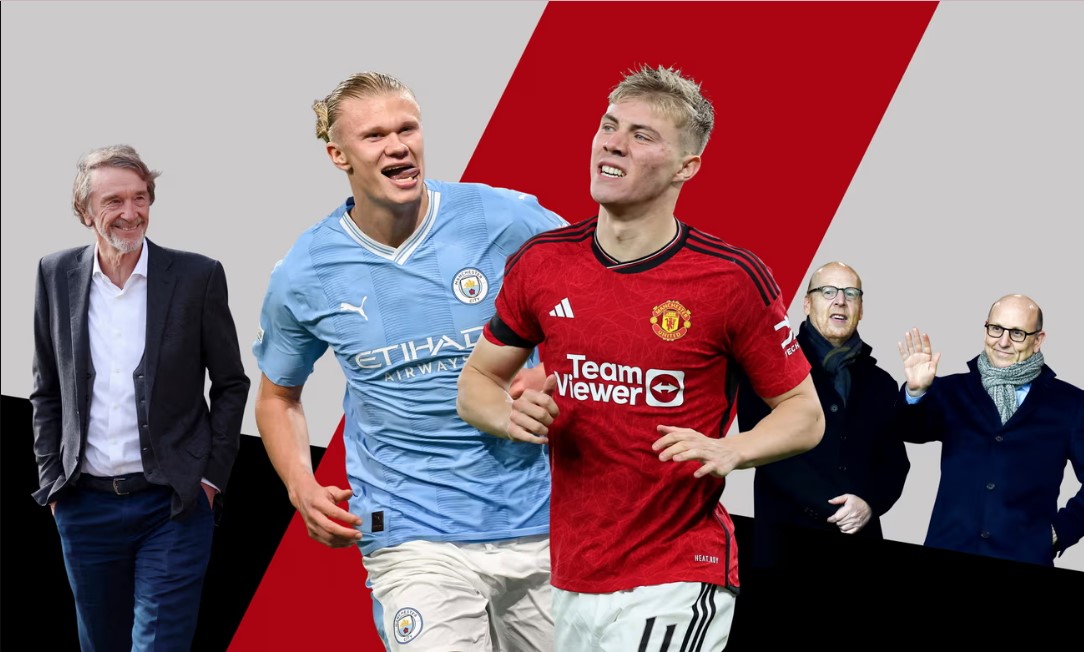Even in the Manchester derby’s rich tradition of drama, subplots and intrigue, Sunday’s 191st edition can be billed as one of the most significant of recent memory. When Manchester United welcomes Manchester City to Old Trafford, an 18-year-old headline story enters a different, potential endgame phase, while a new on-field striker rivalry ignites.
The meeting of these frosty neighbors bookends the expected departure to the Glazers’ near two-decade stranglehold on United, while up front a first showdown occurs between two young Scandinavian centre-forwards: the home side’s derby debutant Dane, Rasmus Højlund, and City’s Norwegian superstar, Erling Haaland.
By March’s league return meeting, Sir Jim Ratcliffe’s move to purchase 25% of United at a £1.3bn premium in return for control of football policy is expected to have been sealed, and the implications for Erik ten Hag’s side and the long-term future of a storied institution should be clearer.
By then we will know whether Ratcliffe’s desire to wrest a quarter share of the club from the six Glazer siblings will become official in time to affect transfer dealings in the January window. Nothing is certain regarding the Glazers and business – next month marks the anniversary of their protracted plans to sell – but last winter’s month of business is, perhaps, one the Ineos owner will hold up as anathema to his ambitions for United.
With Cristiano Ronaldo having exited on the same November day that the Glazers placed the club on the market, a replacement was needed, especially as a title charge was on when the January window opened. Ten Hag’s side stood 11 points behind Arsenal going into meetings with Bournemouth, City, Crystal Palace and the Gunners. When United defeated the Cherries and Arsenal drew with Newcastle, nine points from the next three games will have closed the gap to a maximum three.
But instead of acquiring a hungry young marksman – £35m was Cody Gakpo’s asking price, for example – Wout Weghorst, a journeyman who misfired poorly enough for Burnley to be on a temporary deal at Besiktas, was brought in on loan.

United faltered – drawing at Palace and losing at Arsenal – owing to this acceptance of mediocrity which points to the questionable transfer strategy overseen by the owners. Ratcliffe, notably, flagged his own example during a presentation at the club’s Carrington training base in March, citing how the 30-year-old Casemiro was handed a four-year deal the previous summer, worth around £350,000 a week.
So we turn to Højlund and Haaland, whose presence is a sign the clubs’ disparate times. In 2019, United’s bid to acquire Haaland for £20m failed when the player chose to move from Red Bull Salzburg to Borussia Dortmund. Last June he accepted City’s entreaties, in a £51m transfer that powered Guardiola’s side to last season’s treble.
City bought the finished article in Haaland whereas this summer United signed what Ten Hag characterises as the “potential” of Højlund in a £72m deal from Atalanta. So far the transfer can be rated as prudent because Højlund’s blend of speed, muscularity, finishing and a winner’s attitude is what United require.
